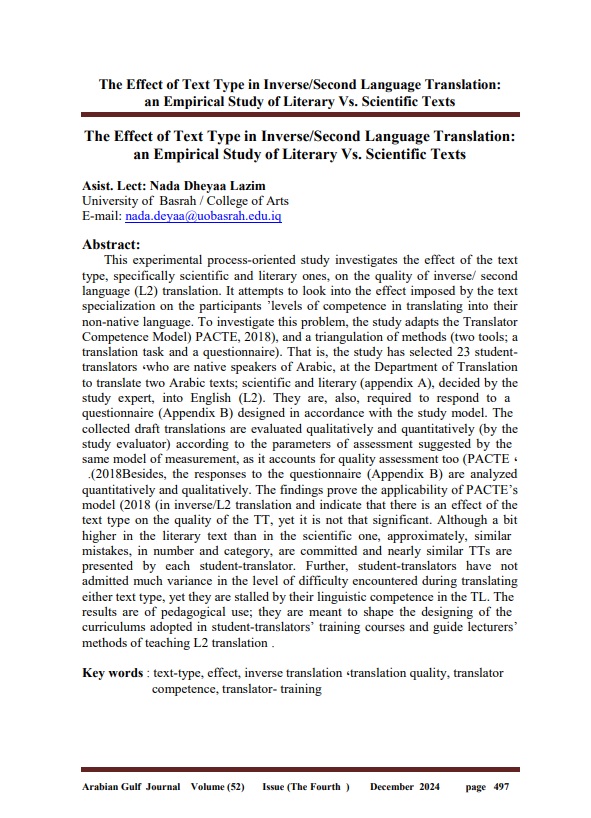The Effect of Text Type in Inverse/Second Language Translation: an Empirical Study of Literary Vs. Scientific Texts
Keywords:
text-type, effect, inverse translation, , translation quality, translator competence, translator- trainingAbstract
This experimental process-oriented study investigates the effect of the text type, specifically scientific and literary ones, on the quality of inverse/ second language (L2) translation. It attempts to look into the effect imposed by the text specialization on the participants’ levels of competence in translating into their non-native language. To investigate this problem, the study adapts the Translator Competence Model (PACTE, 2018), and a triangulation of methods (two tools; a translation task and a questionnaire). That is, the study has selected 23 student-translators, who are native speakers of Arabic, at the Department of Translation to translate two Arabic texts; scientific and literary (appendix A), decided by the study expert, into English (L2). They are, also, required to respond to a questionnaire (Appendix B) designed in accordance with the study model. The collected draft translations are evaluated qualitatively and quantitatively (by the study evaluator) according to the parameters of assessment suggested by the same model of measurement, as it accounts for quality assessment too (PACTE, 2018). Besides, the responses to the questionnaire (Appendix B) are analyzed quantitatively and qualitatively. The findings prove the applicability of PACTE’s model (2018) in inverse/L2 translation and indicate that there is an effect of the text type on the quality of the TT, yet it is not that significant. Although a bit higher in the literary text than in the scientific one, approximately, similar mistakes, in number and category, are committed and nearly similar TTs are presented by each student-translator. Further, student-translators have not admitted much variance in the level of difficulty encountered during translating either text type, yet they are stalled by their linguistic competence in the TL. The results are of pedagogical use; they are meant to shape the designing of the curriculums adopted in student-translators’ training courses and guide lecturers’ methods of teaching L2 translation.




